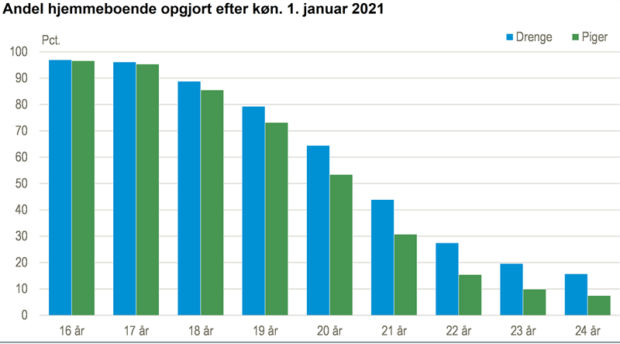The share of young adults aged 18-21 who live at home with their parents has increased over the past decade.
According to figures from Danmarks Statistik, 64 percent of the age group reside with at least one parent in 2021 – an increase of 7 percent compared to 2011.
The biggest increase was among 20-year-olds, which rose by 11 percent compared to ten years ago.
READ ALSO: Smartphone usage thriving among pre-teens
Boys staying home
The figures also reveal that among 16 to 24-year-olds there are more boys than girls who live at home – 64 percent compared to 53 percent.
From a municipal point of view, municipalities that have major student towns have a lower share of young people living at home.
Read more about the figures here (in Danish).















